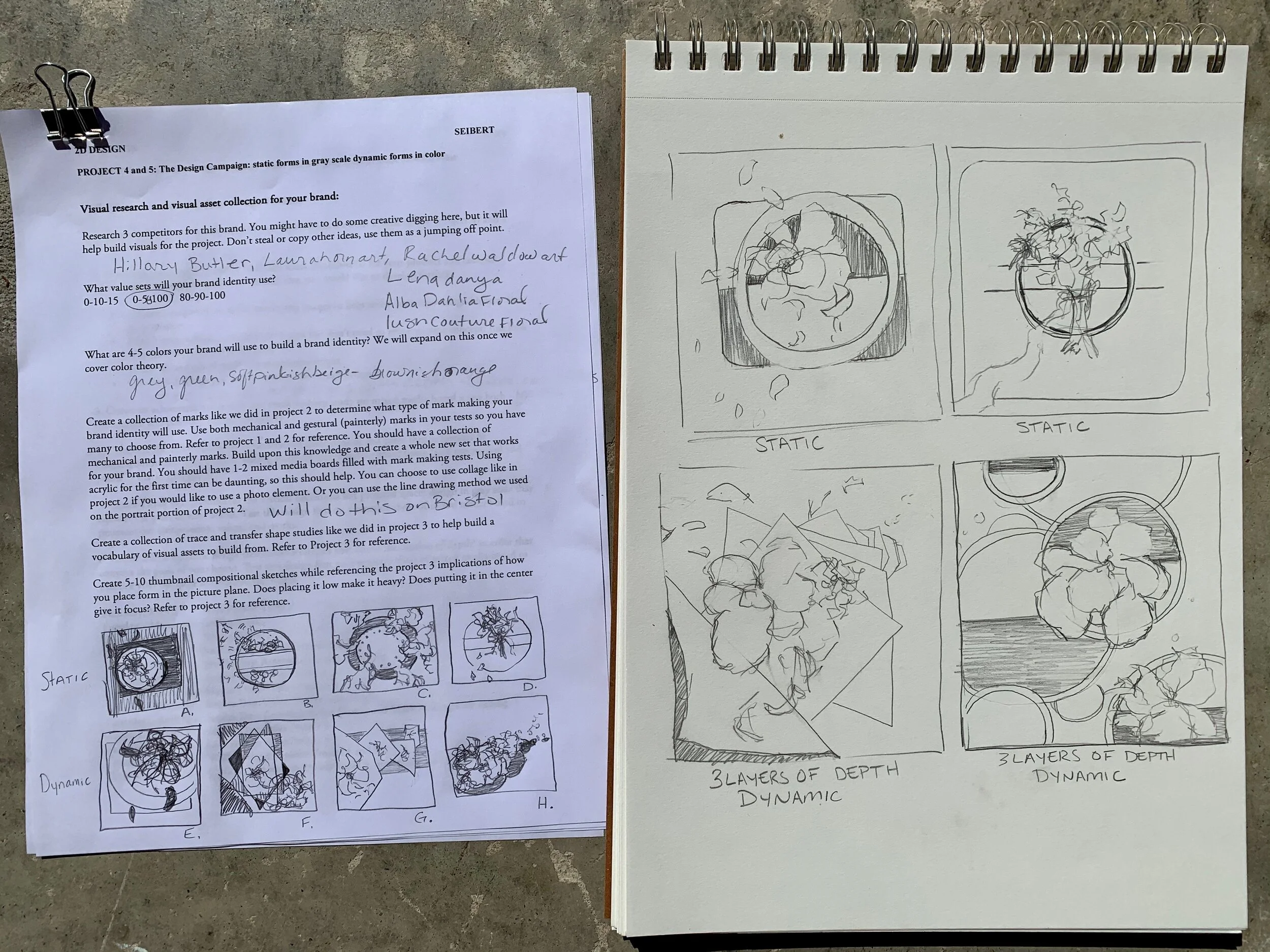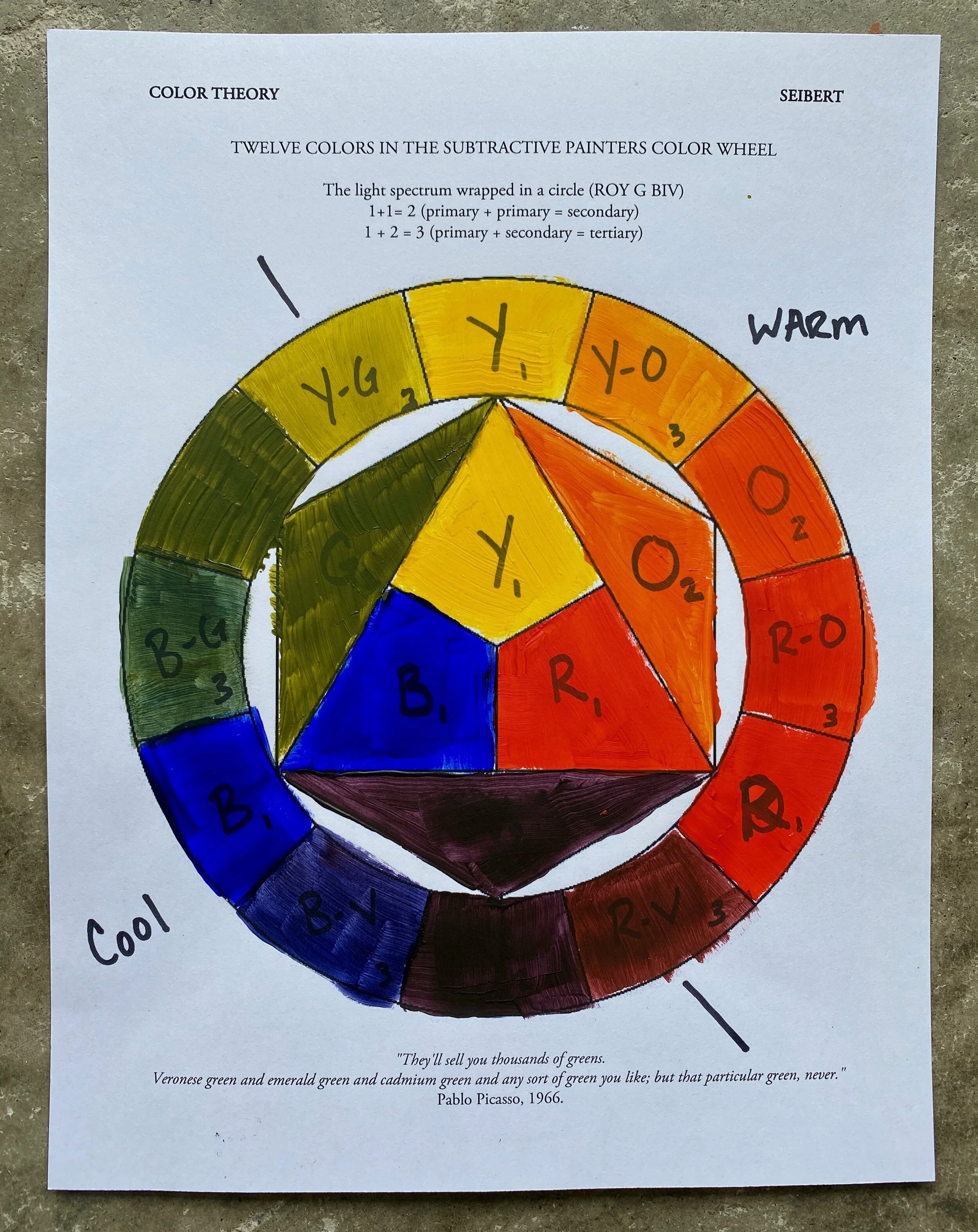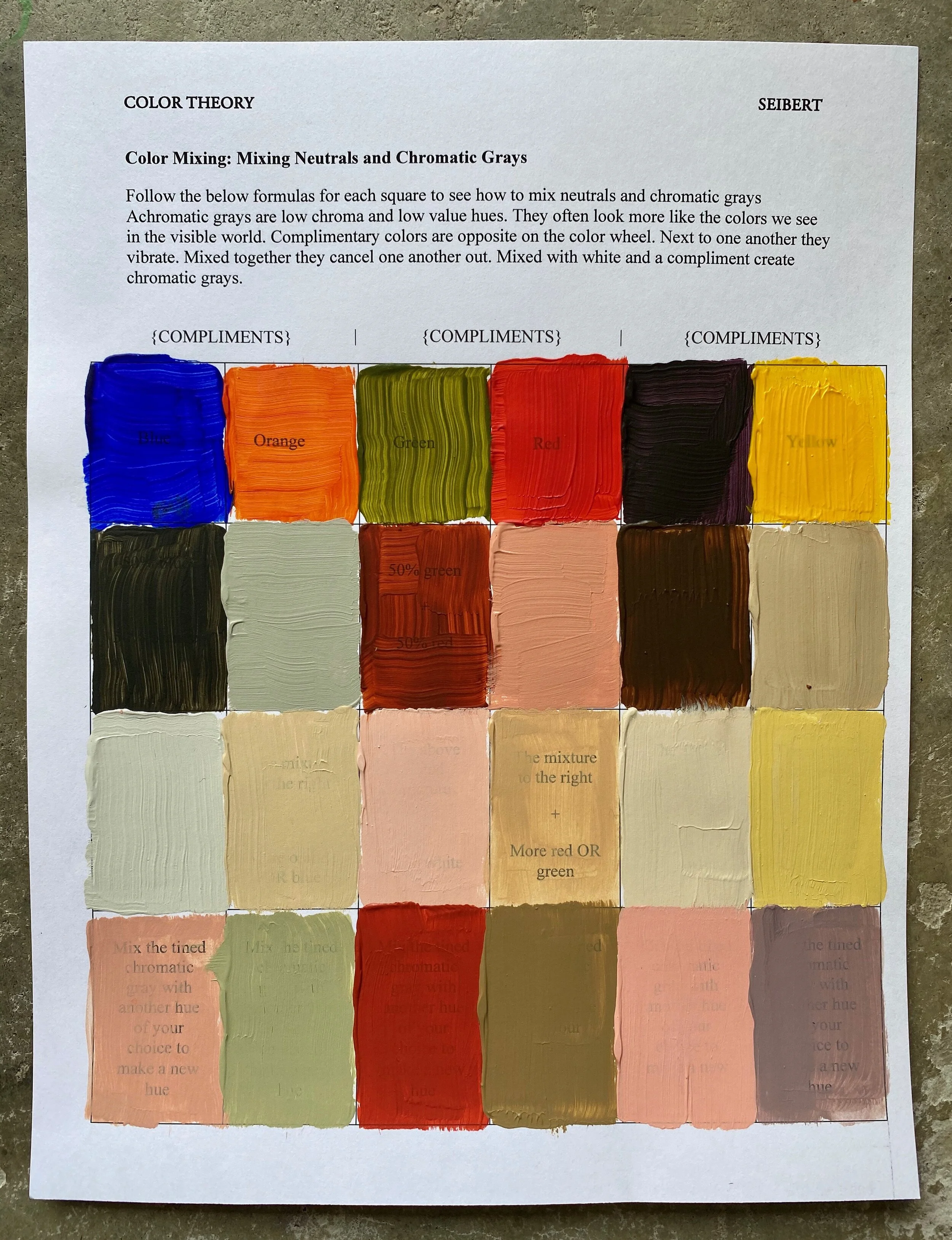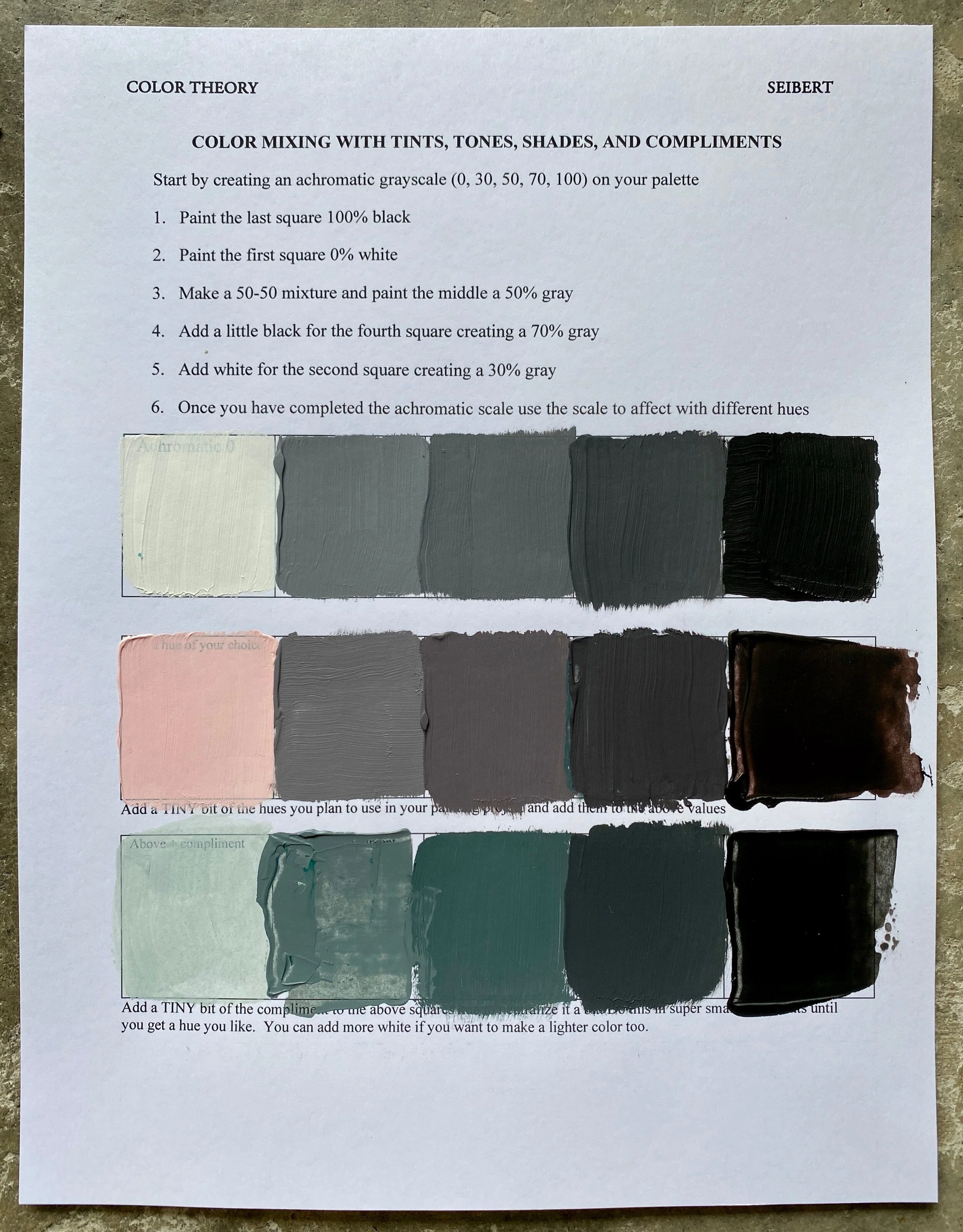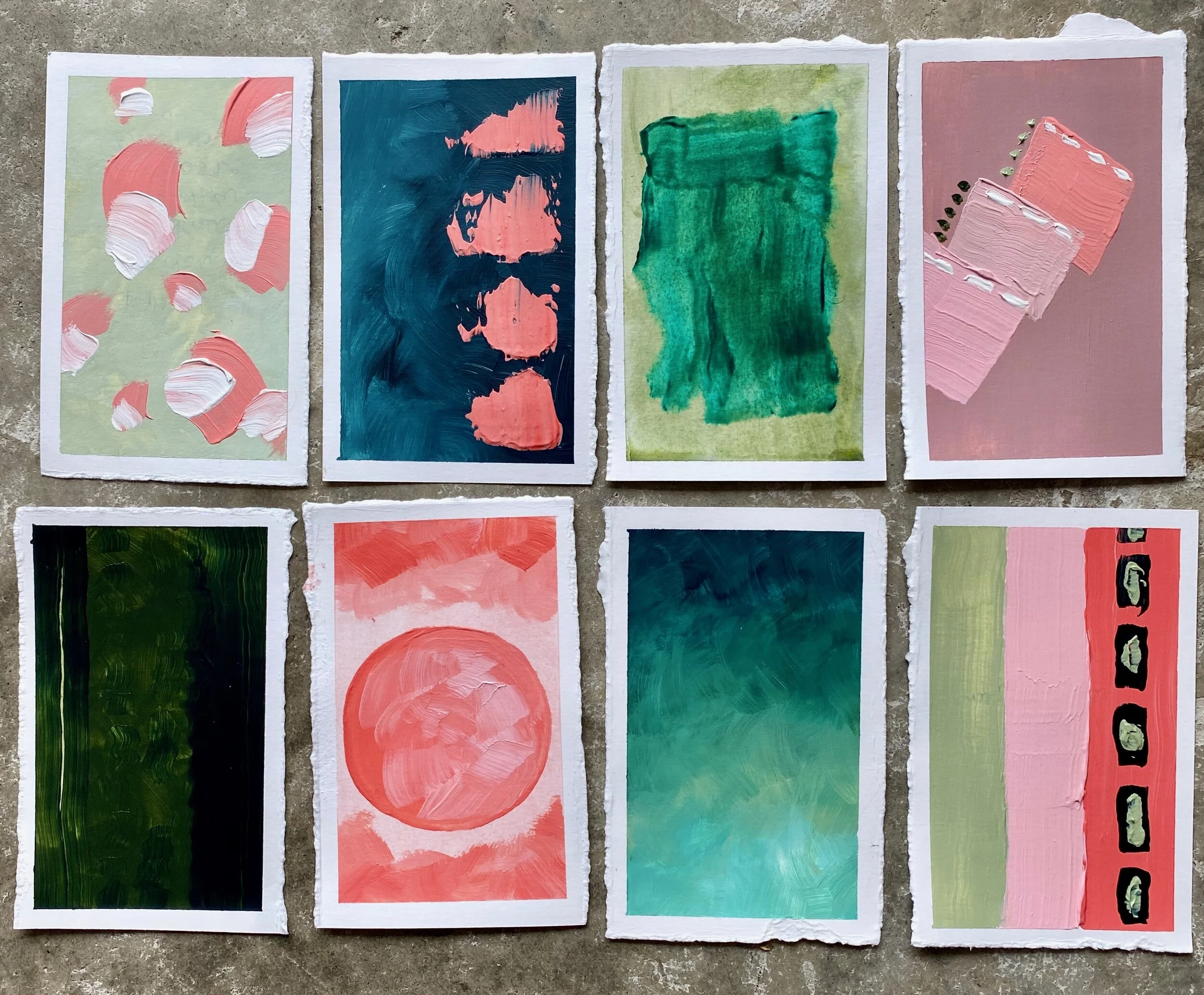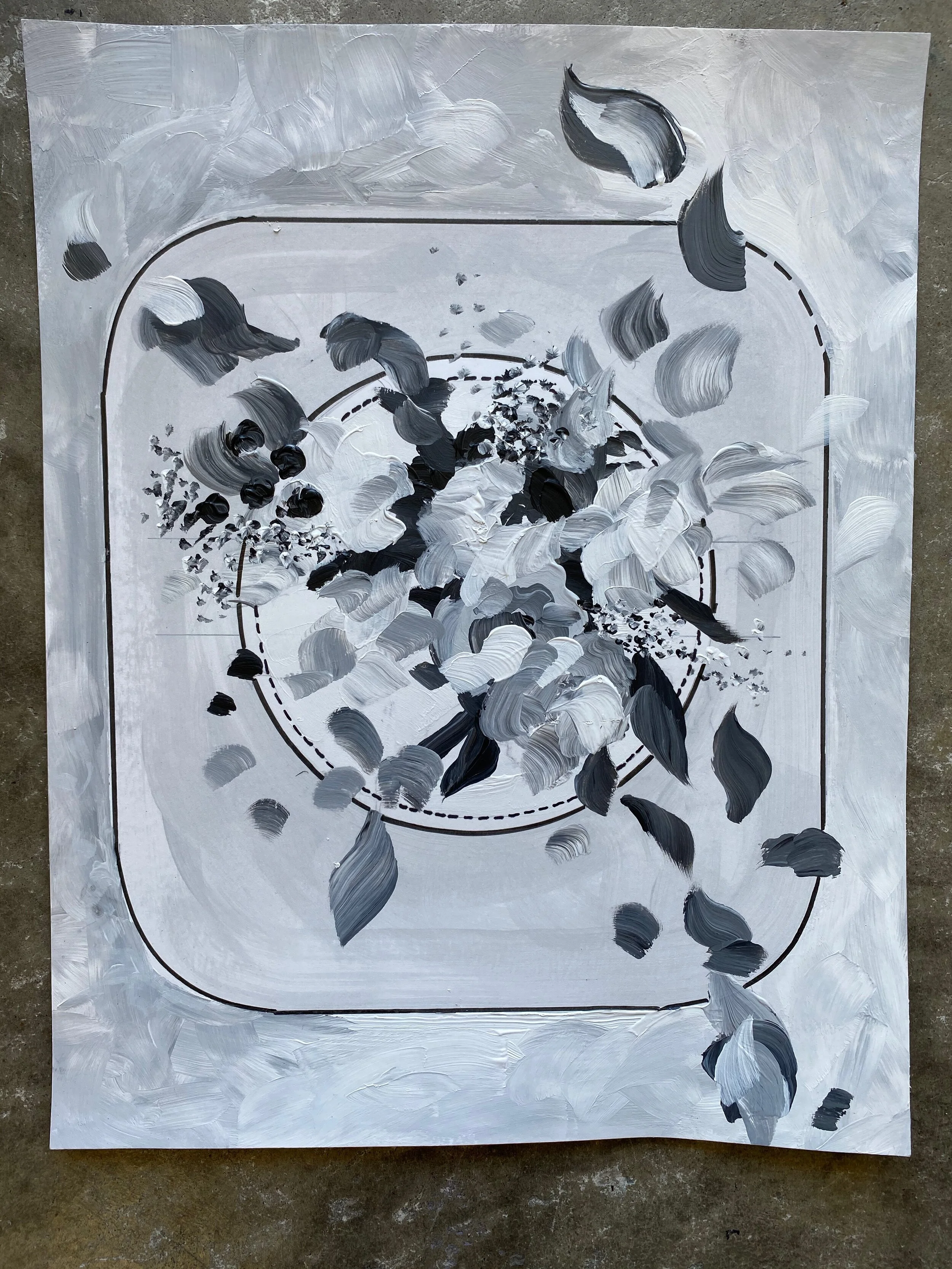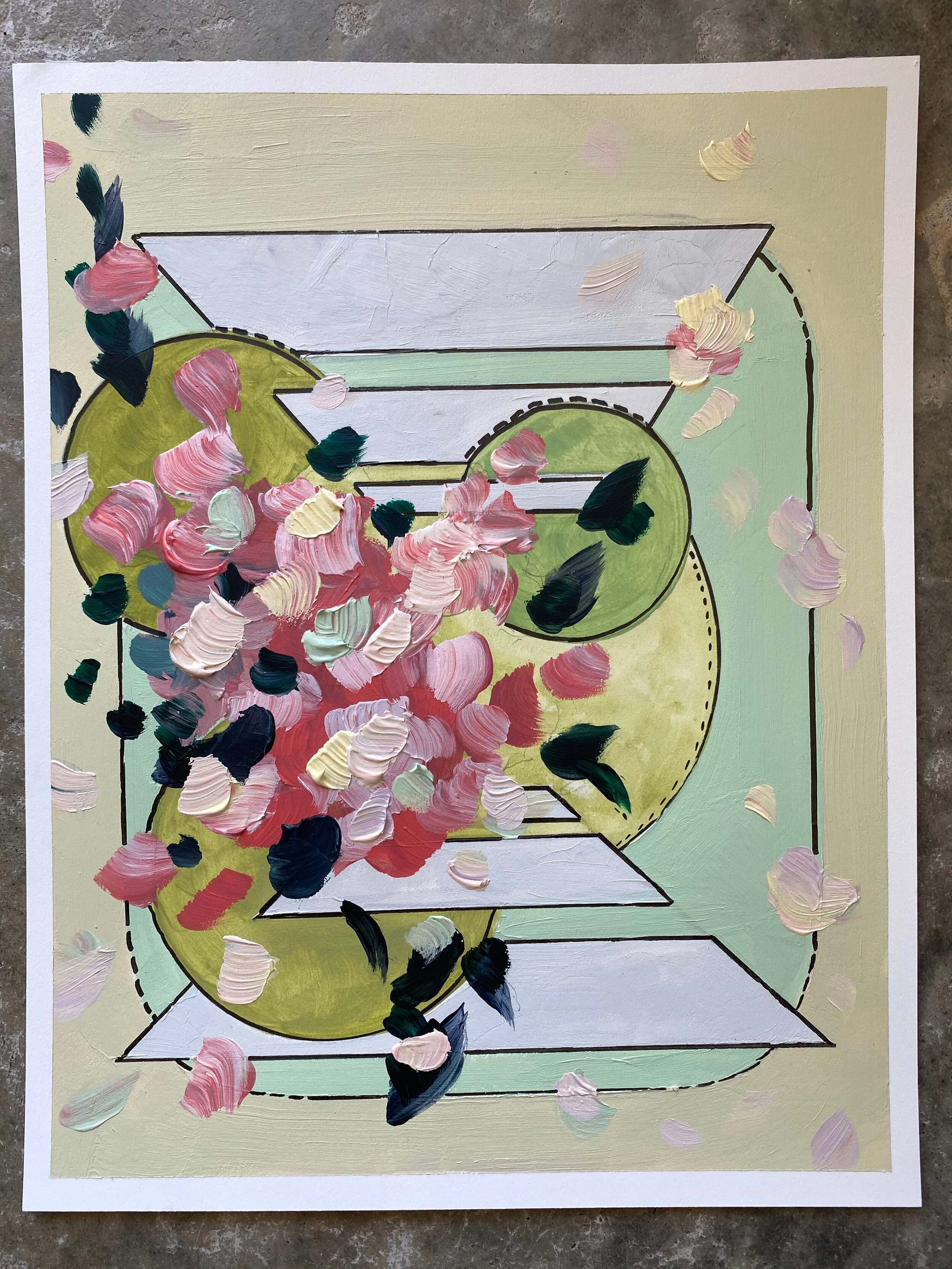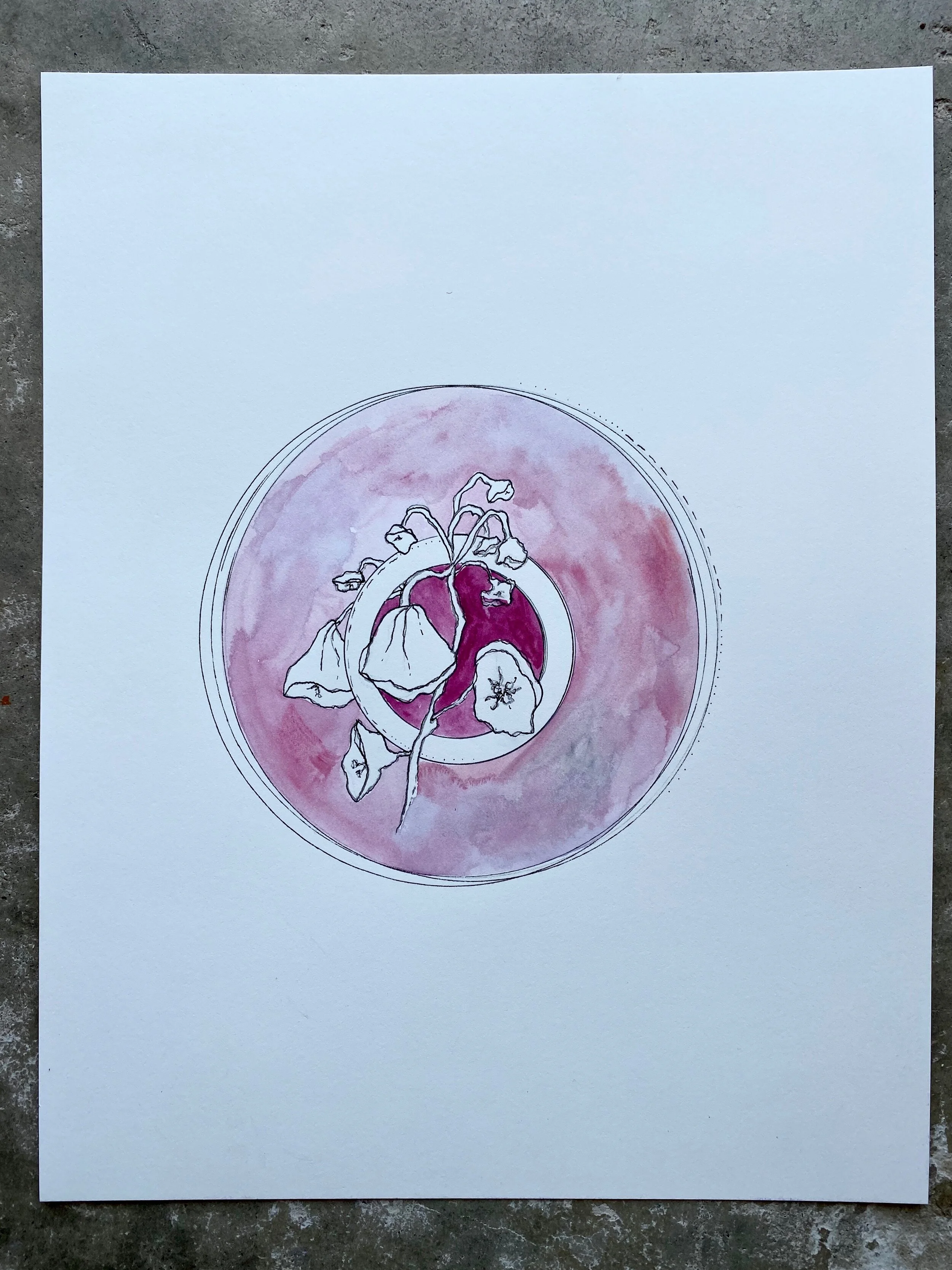Seibert’s 2d design online Classroom
Find class information and course projects
Getting started at home
Create a place to work at home.
First meet up in our online world
Getting us together. Making a plan.
Introducing Project 4 & 5
Starting Project 4 & 5.
Planning and Compositional thumbnail sketches.
Please find the link below for details to follow along each day.
Create 4-5 static comps and 4-5 dynamic comps. Choose 1 of each and revise based on the analysis of other design works (posters, ads, albums, etc.) you find in magazines or online. The video above explains how I revised mine based on a Geico, Lean Cuisine, and Life Saver ad.
Getting test surfaces ready for painting experiments
Cut or tear an 11x14” mixed media board into 8 rectangles.
Create 8 simple designs to test how paint works.
Use simple shapes with curves, straight edges, big, and small so you can test different paint techniques and applications.
A video will follow on how to use the paint. Just do the designs now.
8 simple designs to practice painting techniques and applications
8 SIMPLE overlapped straight and curved designs to practice painting techniques on mixed media board.
A little information to get us started before we start our acrylic paint tests.
Here is a bit about your acrylic paint, a bit about brushes, how to mix, and how to clean a brush.
Experimenting with acrylic paint on test practice surfaces.
This video has no sound so you can scrub through it. Below you will find a video describing how to build a value scale on your palette and of two test surfaces being painted with dialogue included to help explain the process.
One example of test acrylic painting experiments before project 4 & 5
Video with audio describing setting up a gray palette & creating test painting. Think of these as playgrounds to investigate how the paint works.
Follow this video along with audio included to describe each step. The video above does not have audio and uses different techniques. These are meant to be small playgrounds to investigate the many ways acrylics can be used. The video starts by describing how to create a value scale.
Creating our drawings on mixed media board for our paintings: project 4&5
Creating our drawings on mixed media board for project 4 and 5 (with audio)
Acrylic Achromatic Gray Scale demo for project 4 static design
Details for achromatic grayscale demo for project 4 static design
Color Theory, history, and vocabulary
intro to acrylic paint before we get into full color mixing with color theory. warm and cool tendencies of paints, a bit about mixing, and how to save acrylics when you are done with a session.
We will build a color wheel, understand the start of color theory as it pertains to mixing colors, and saving paint at the end of a session.
We will build a color wheel, understand the start of color theory as it pertains to mixing colors, and saving paint at the end of a session.
Mixing with tints, tones, shades, and compliments demo
Creating 8 small color test paintings before beginning Project 5 dynamic design
Painters color wheel
color mixing - neutrals and chromatic grays
mixing with tints, tones, shades, and compliments
8 little color test paintings
Painting Project 5: Dynamic Design in Color Demo - part 1 - building the background design
Painting Project 5: Dynamic Design in Color Demo - part 2 - building the middle ground
Painting Project 5: Dynamic Design in Color Demo - part 3 - building the Details and foreground
Project 4 example: Static achromatic design
Project 5 example: dynamic chromatic design
There was an announcment sent in canvas with more details about the final project.
Final Project 6 - reiterate, reconsider, rework, recreate - this was a first attempt.
See below for a rework…
Here is the final project 6 example after a revision - didn’t like the large pink circle so I painted it out with a white impasto (chunky) mark
Sketchbook Homework project (project 7)
The links below will take you to the objective for the day.
1: Tuesday, March 24th: Click here for today’s presentation.
Here is the handout for Project 4 & 5. It might be easier to find on canvas, but putting here for continuity.
2. Color theory histories, workbook, vocabulary, and mixing. Download the workbook here.
3. Here are three links to the stay wet Masterson palette I mention in the video to keep you paints wet for quite a long time.
https://www.dickblick.com/products/masterson-sta-wet-palette-seal/
https://www.dickblick.com/items/03029-0010/
https://www.dickblick.com/products/holbein-watercolor-atomizer-bottle/
I only use the stay wet paper in the second link inside the box in the first link. I run water over them in the sink on both sides, shake them off, and then put it in the box. I also use a spray bottle to squirt the paint when I'm done with a session. The third link is a spray bottle that should work well. I use the ones from hobby lobby, but I think this one is about the same. You can also get a sponge insert, but I don't love using one of those as it is squishy and it works well without one.


